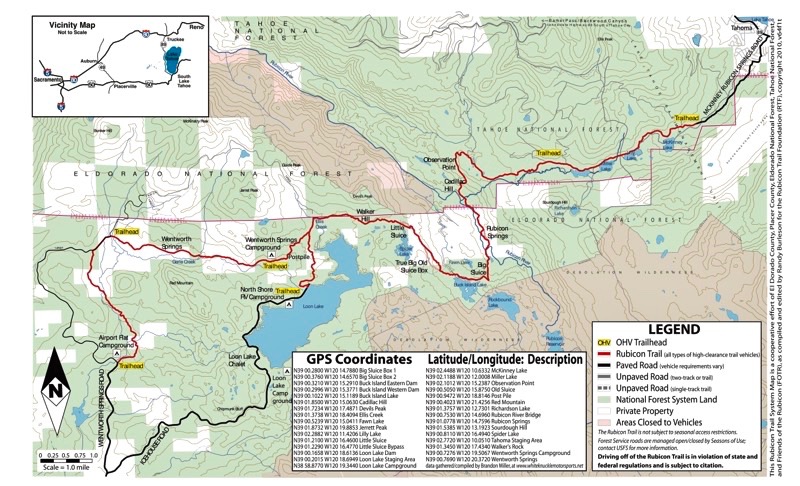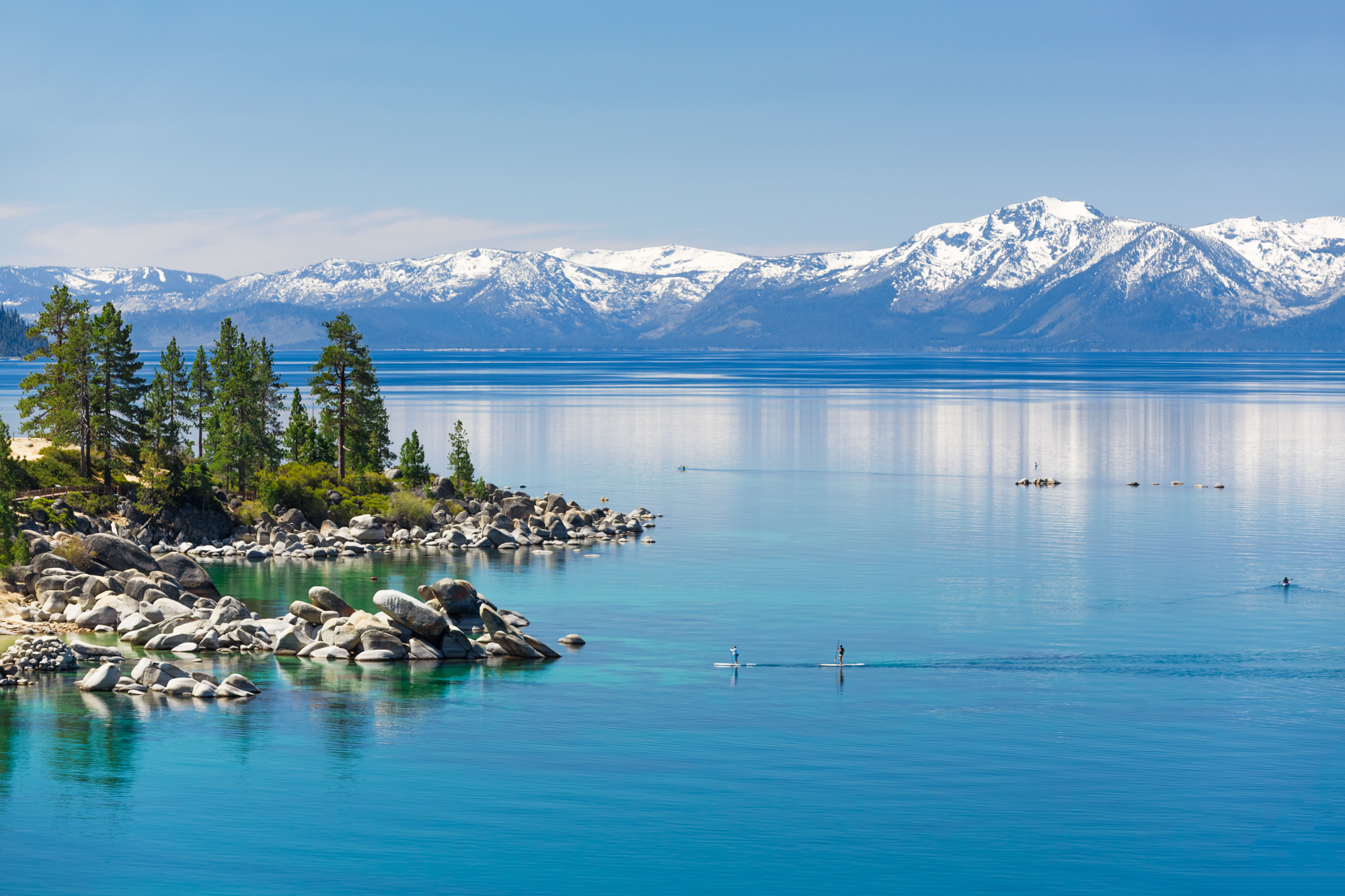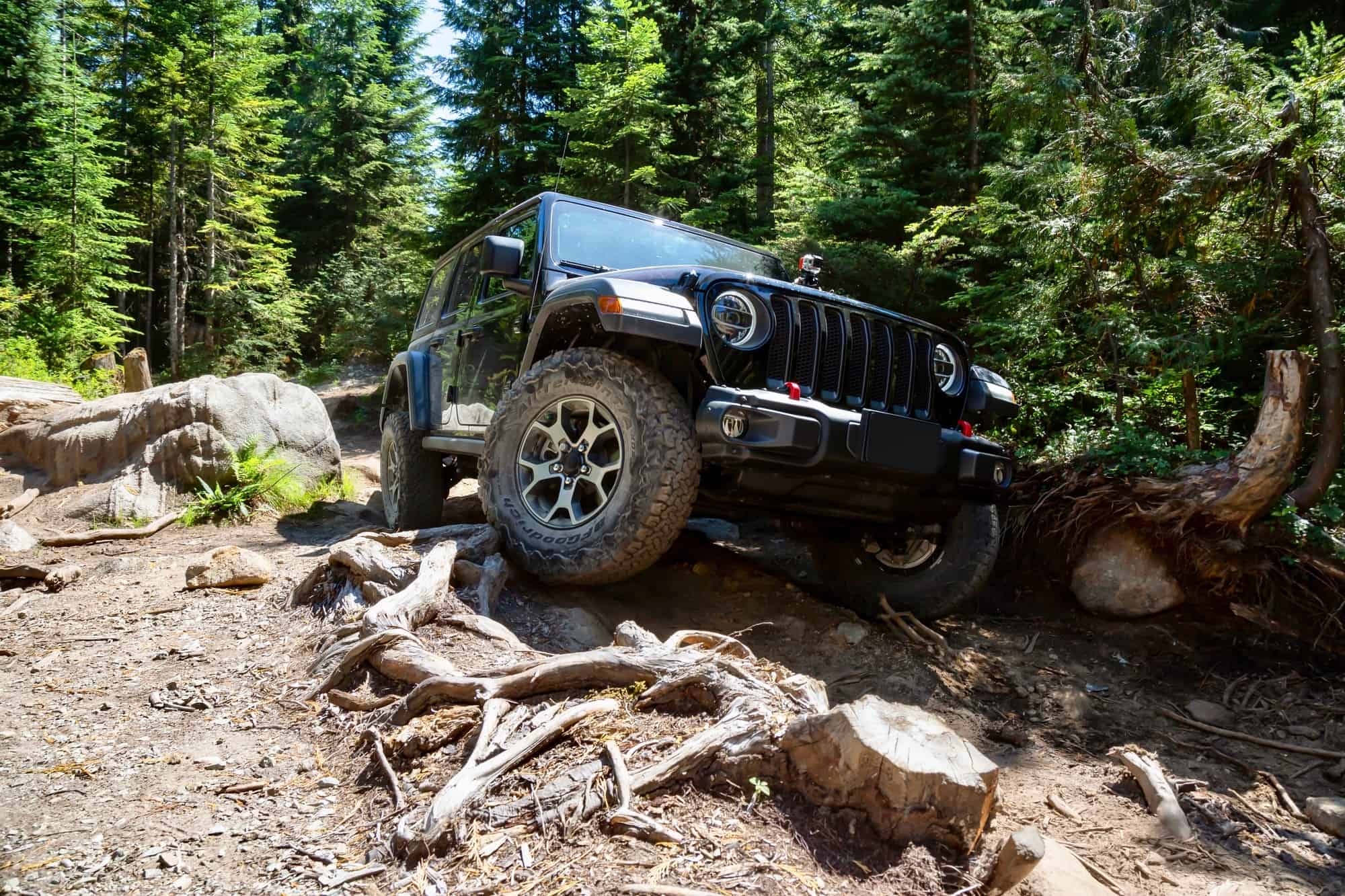Editor’s note: This article was shared by overlandsite.com, and is designed to help off-roaders prepare for the adventure of driving a classic 4×4 or a brand new one on the famed and daunting Rubicon Trail. Yes, winter has begun settling in on the Sierra Nevadas, but you can start planning now for your off-road adventure in 2020.
As an off-road enthusiast, you must have heard of the rather infamous Rubicon Trail. In short, it is a 22-mile long “road” that includes 4×4 trails with all the things (challenges) appreciated by every off-roader out there.
Originally, what has become known as the Rubicon Trail was used by Native Americans traveling back and forth between the Sacramento Valley and Lake Tahoe in what is not northern California. The trail was not discovered by European travelers until the 1840s.
The trail was named for the Rubicon River, which the trail crosses. The river was named after the Rubicon River in northern Italy. That Rubicon was crossed in 49 BC by Julius Caesar during the Roman Civil War. Since Caesar, “crossing the Rubicon” has become a metaphor for “the point of no return.”
But don’t worry. Not that it’s anything like cruising along a freeway, but motorcars have been traveling the Rubicon Trail in the Sierra Nevada range for more than a century. The first automobile crossing of the Rubicon Trail was done in 1908, by a woman who drove from Lake Tahoe to Rubicon Springs. The trail has become a bucket-list item for off-roaders since the first Jeep Jamboree was held in 1953.
But let’s cut the chatter for now and jump into the details. As beautiful as it may be, you mustn’t underestimate the trail; there are some things that you should know before you start driving.

The location
The Rubicon Trail can be found in the historic gold-rush territory of California. To be more specific, you can find the trail across several parts of the Sierra Nevada range – with a lot of twists and turns and rocky obstacles that would make any off-roader smile and/or cringe.
To get there, you go 63 miles east of Sacramento, to Riverton and the junction of U.S 50 and Ice House Road. Go north out of Riverton and wind your way to Loon Lake – it’s a 23.4-mile trip. On the west side of Loon Lake, near the dam, you can find the start of the trailhead.
You can easily set your GPS to get you there. However, you should buy or print a map of the entire trail just to be safe.
Important waypoints
Here are the essential waypoints of the Rubicon Trail that you should be aware of, as well as bits of information about them. As mentioned above, you can either save them in your GPS or note them down on a map. Make sure that you know where they are and how to reach them.
The Ice House Resort – Here, you can easily stock up on food, ice, and drinks for the very last time on your trip across the Rubicon Trail.
Trailer Parking – Quite close to the resort, but keep in mind that it is not guarded.
Loon Lake Dam – You’ll have to cross over this in order to get to the trailhead itself.
Dam Parking – Beside the dam, and you’ll find a billboard with the on-the-trail rules. However, it isn’t safe to leave your tow rig here.
Granite Bridge – It is a shallow water crossing. Shortly after the Granite Bridge, you’ll come across a “Difficult Spot,” especially if rocks are stacked.
Soup Bowl – This one is a stair-step obstacle that can be easily surmounted.
Little Sluice – This is known as the best camping site in the area, so take advantage of it.
Extreme rating
The trail comes with an Extreme rating, and for good reason. The trailhead that starts the Rubicon Trail sits at an impressive 6,331 feet in elevation. Then, the trail continues to climb in its starting section.
The start of the Rubicon Trail is also the place where overlanders have to face some of the trail’s legendary obstacles. On top of that, the Little Sluice location is located on the south-east side of the terrifying Devils Peak. The Sluice Box sits at an elevation of 6,684 feet.
Cadillac Hill will be the last of the trail’s major challenges. However, keep in mind that this waypoint still sits at around 6,162 feet in height – don’t take it lightly.
Toward McKinney Lake, the Rubicon Trail starts to bend downhill.
Preparing your vehicle (and yourself)
The Rubicon Trail offers an extreme challenge and will push you and your vehicle to the limit. Expect some vehicle damage, getting stuck multiple times during the trip – and regretting that you didn’t prepare yourself properly.
Whether your vehicle is brand new or one of the vintage 4x4s becoming so popular with car collectors, it should have a limited-slip or locking differential, and at least one frame-mounted recovery point, front and rear, and a winch rated for twice the weight of your vehicle.
It also will need some protection for its body and chassis — rocker guards and skid plates for the transmission pan, transfer case, and gas tank. To protect yourself and other occupants, a roll bar or at least a factory hardtop is important.
Tires should be at least 33 inches with 3-ply sidewalls and good tread.
It is recommended that the tires are at least 33-inches and feature three-ply sidewalls with proper thread as well.
For improved torque when crawling, the gear ratio should be 55 to 1 for automatic transmission and 65 to 1 for manual transmission.
How to enjoy the travail
Plan on doing your Rubicon Trail adventure for a two-day period. You can camp along most of the trail. The most popular spots are Ellis Creek, Buck Island Lake, the observation point at Cadillac, and Wentworth Springs.
Last but not least, keep in mind that you are not allowed to drive off-trail and that you need a permit if you want to build fires. It goes without saying that proper camping etiquette is a must – leave the trail as you find it.
Overnight accommodations also can be found near the trail at Gerle Creek, Loon Lake, Airport Flat, and Kaspian.

The bottom line
The Rubicon Trail should be experienced at least once during your driving lifetime. However, keep in mind that the trail cannot be taken lightly. It is a challenge even for overlanders.
However, prepare well, include the required safety measures, and you’ll enjoy a breathtaking experience.





